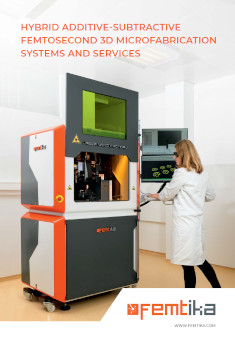Manufacturer Informations

FEMTIKA is a leading provider of advanced laser technology solutions in multiphoton polymerization and selective laser etching.
The cutting-edge technology allows for precise and efficient processing in a wide range of industries, including microelectronics, medical devices, and aerospace engineering.

(PDF - 3 Meg)








































